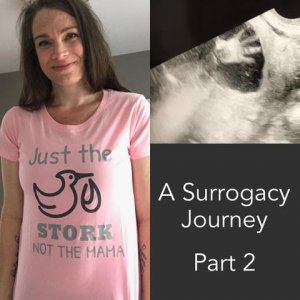Beginning a surrogacy journey can feel complex and overwhelming for both surrogates and intended parents (IPs). Thankfully there are people all along the way whose job it is to make these steps easy to understand. A few of the many required steps for our situation included testing and obtaining medical clearance from a Reproductive Endocrinologist (RE) for me, psychological clearances for myself, my husband and for Carrie, a contract in place using specialized reproductive attorneys, and obtaining donated embryos.
Once we had taken all the necessary medical and legal steps required, we were ready to begin the process of in vitro fertilization (IVF). As mentioned in Part 1, Carrie’s desire was to add to her family with the help of embryo donation (you can read more about embryo donation here.) As I thought about surrogacy, the medications and hormones – most specifically the injections – was what I felt most nervous about. I’ve always been fearful of needles and knew that in order to be a surrogate, I would need daily injections for months. It was both my husband, Drew, and my daughter, Selah, that gave me strength to continue to pursue surrogacy in the face of those injections. Drew told me early on that he would be happy to give me the injections if I couldn’t. He didn’t tell me until after the med cycle that he would’ve hated giving me shots, but had told me he would be happy to do it so that I wouldn’t be as nervous. Selah has endured more shots, procedures and surgeries in her life so far than most people experience in a lifetime. The med cycle became another surprisingly beautiful part of the process for me personally because my daughter, and her courage in the face of medical complexities, gave me the strength to pursue something that required facing a lifelong fear in order to achieve. I overcame my fear of needles by doing many of the injections myself, which was deeply empowering. Selah also loved helping. She learned the whole process of drawing up the medications to cleaning my skin and giving the injections. It was healing for her to be on the other side of the needle.



